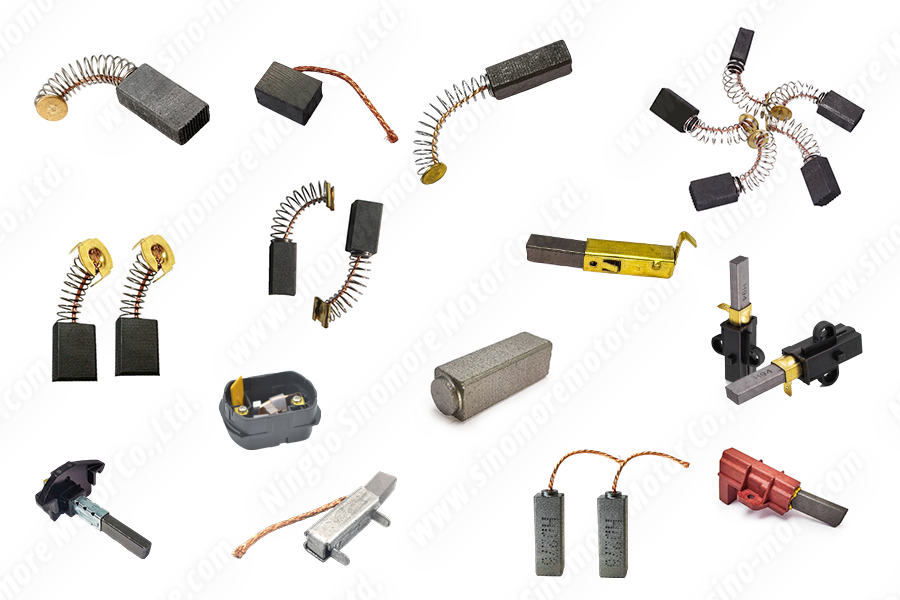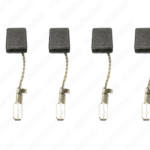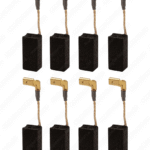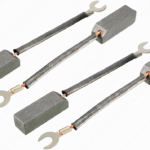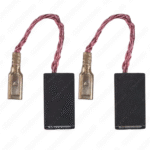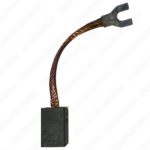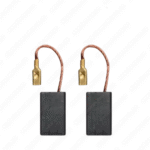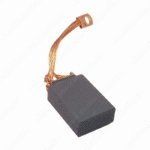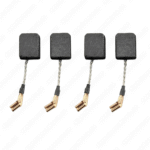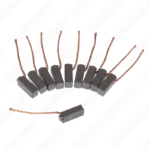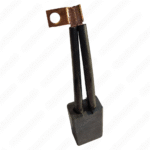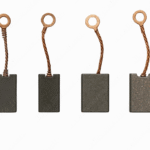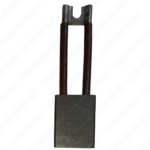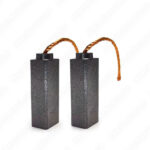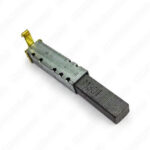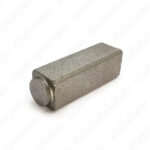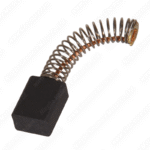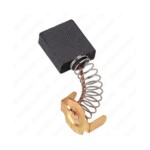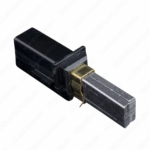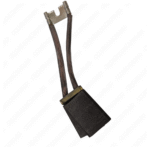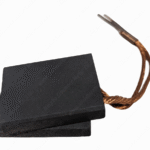Carbon Brush: The “Invisible Bridge” Linking Static and Rotating Parts in Electrical Gear
From “Wire Brushes” to “Carbon-Based Parts”: The Carbon Brush’s Material Makeover
The name “Carbon Brush” first came from its look—early versions were made of copper wires, looking like regular brushes. But these wire brushes had big problems: they wore down the commutator (the part that switches current in motors) badly when working, and often had issues like poor contact or getting stuck, which shortened how long the equipment lasted.
Materials and Making: What Shapes the Carbon Brush’s “Personality”
What makes one Carbon Brush different from another? Mostly its materials and how it’s made. There are four main types, each with its own “personality” for different jobs:
Carbon Graphite Carbon Brush: Made by mixing carbon and graphite and pressing them together, this is one of the older Carbon Brush types. It’s strong but rubs a lot, so it’s better for slow, old machines. In modern, fast, high-performance equipment, it’s used less because it wears the commutator more.
Electrographitic Carbon Brush: Treated with high heat, this Carbon Brush has a tighter, stronger structure. It handles high temperatures, dry air, and even dusty or dirty places well. It doesn’t lose efficiency when conditions change and lasts longer than regular Carbon Brushes—great for heavy industrial machines.
Graphite Carbon Brush: Made from natural graphite stuck together with resin in layers, this Carbon Brush’s best trait is “fast film-forming.” When it runs, it quickly makes a protective layer on the commutator or slip ring, like a shield, to reduce wear from rubbing or dirt. It also soaks up little and is dense, staying steady in dusty or wet places and lowering the chance of breakdowns.
Metal Graphite Carbon Brush: This Carbon Brush mixes graphite with fine metal powders—usually copper, sometimes silver, tin, or lead. The metal makes it super conductive with low resistance, perfect for low-voltage, high-current jobs, like plating generators or wound rotor motors that need lots of current. It also loses little voltage when touching, so it’s often used as a grounding brush to keep equipment safe.
Designs That Fit: How Carbon Brushes Are Built to Work
Besides materials, how a Carbon Brush is built also helps it fit different equipment. There are three main designs:
Split Carbon Brush: Made of 2 or more carbon pieces held together (with rivets or rubber tops), this design gives more contact points with the commutator. Pressure spreads evenly, so no single spot wears too much. It also makes electricity flow more steadily, great for equipment that needs precise contact.
More Than Just “Carrying Electricity”: What Makes the Carbon Brush Essential
The Carbon Brush does more than just move electricity—it’s like a “controller” that keeps equipment steady:
- The “Smooth Electricity Mover”: As a sliding part, the Carbon Brush connects the stationary stator and moving rotor, letting electricity flow. Its material also cuts down on sparks, protecting parts and keeping the current going.
- The “Torque Direction Keeper”: In DC motors, to keep torque going the same way, the current in the rotor needs to reverse every half-turn—this is “commutation.” The Carbon Brush makes this happen: it’s fixed to the stator and touches copper plates on the rotor, switching the current direction at the right time as the rotor spins, so the motor keeps putting out steady power. Without the Carbon Brush, torque direction would be all over the place, and the motor wouldn’t work.
Good and Not-So-Good: The Carbon Brush’s Two Sides
The Carbon Brush has clear upsides: it moves electricity smoothly between static and moving parts, is key for steady torque, and since it’s a wear part, you just replace it instead of the whole machine—saving money on repairs.
Value and Partnership: The Carbon Brush’s “Staying Power”
From its wire beginnings to today’s varied carbon designs, every step forward for the Carbon Brush has made it more reliable and better at fitting needs. This small part is really the “heart” of motors and generators—it carries electricity and keeps torque steady, a behind-the-scenes hero of modern electrical gear. To keep it working well, you need to know its traits and take care of it, so it can keep equipment running long.

